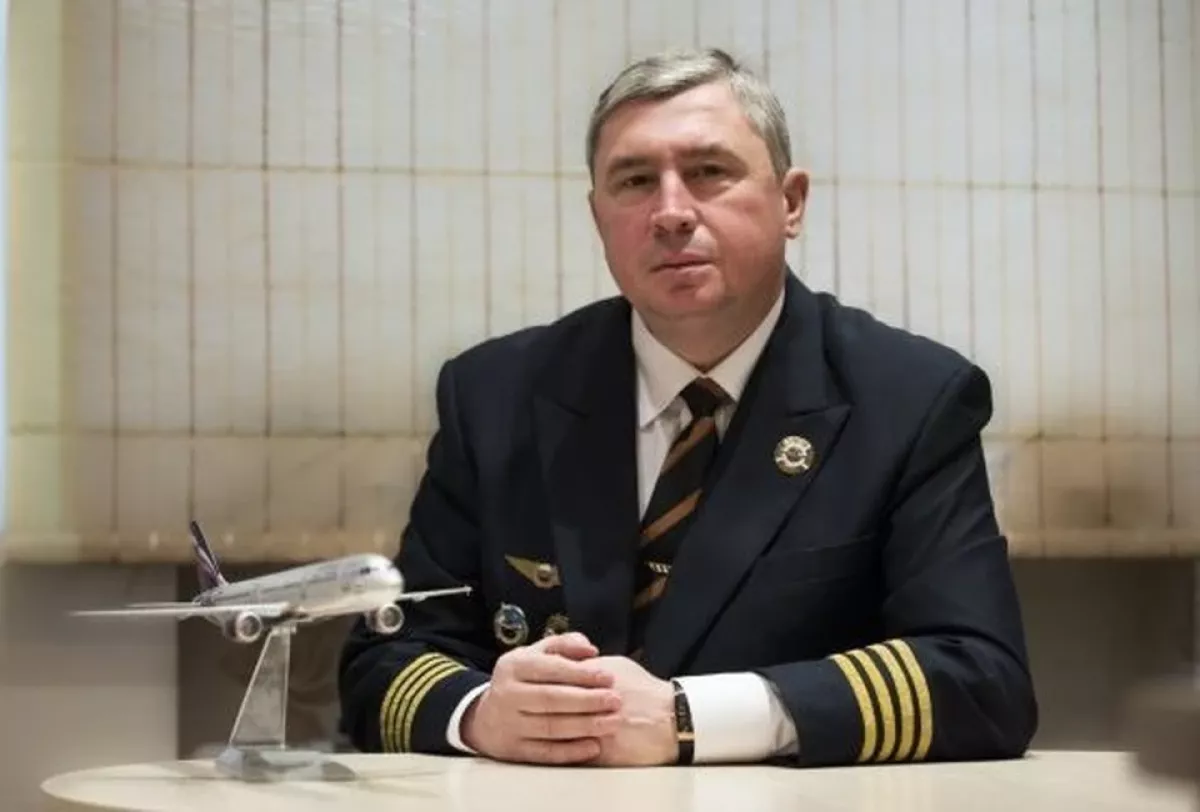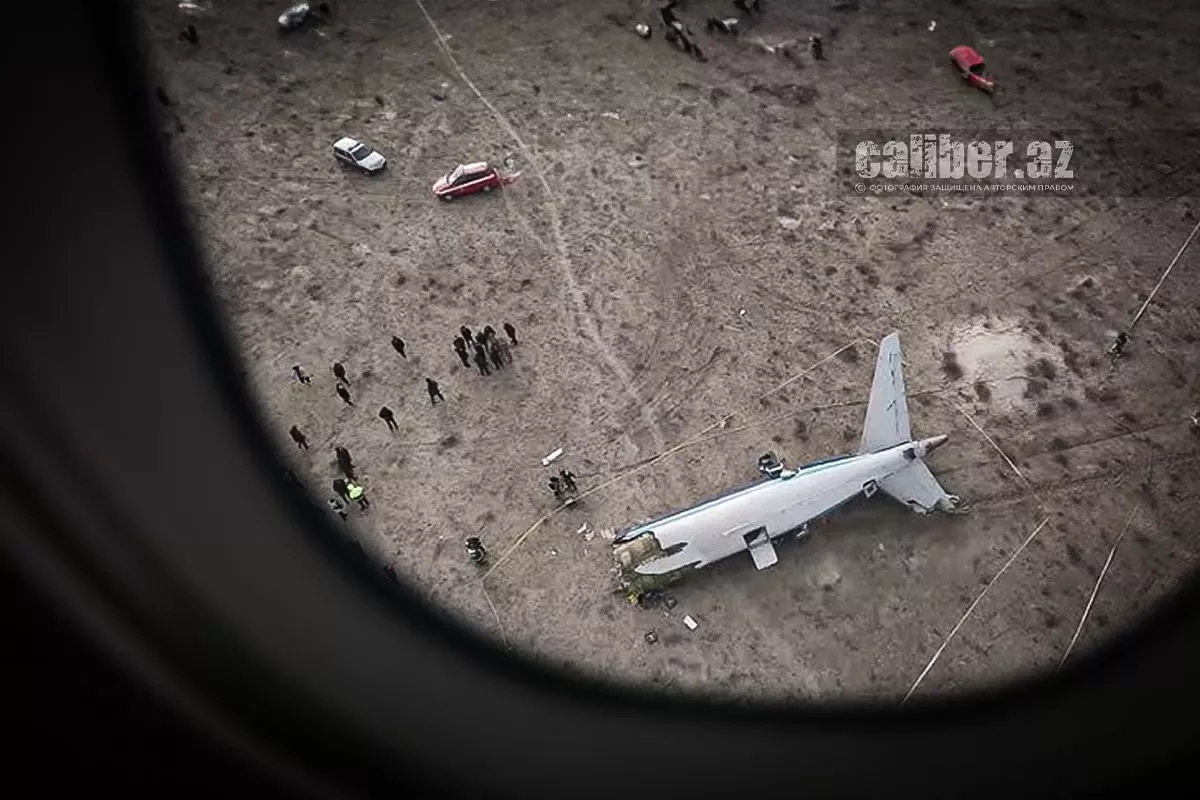Unspoken truth on Azerbaijan Airlines plane crash near Aktau An analysis of Litvinov’s interview
The publication of the preliminary results regarding the plane crash involving Azerbaijan Airlines near Aktau on December 25, 2024, by Kazakhstan's Ministry of Transport has reignited discussions surrounding the tragedy. In light of this, we wish to provide our analysis of the interview given by renowned Russian aviation expert Andrei Litvinov to Igor Zyryanov, host of the Air Crash Investigation channel—one of Russia’s most popular platforms dedicated to the analysis of aviation accidents. It is worth mentioning that this is not the first time Litvinov has appeared on the channel; his previous interviews have offered a well-balanced and professional perspective on aviation disasters. However, in this latest conversation, the expert seemed to display a certain level of carelessness regarding key details, which we believe warrants further examination.
One of the key topics raised in connection with the report was the timing of the mechanical impact on the aircraft and the announcement of the "Carpet" plan. As is well known, there was a gap of several minutes between these two events. This leads to one of the main questions for those following the incident: why was the signal to activate the "Carpet" plan issued only after the aircraft was struck?
Without waiting for the host’s question, Andrei Litvinov explained that the "Carpet" plan was announced after the plane had left Grozny’s airspace following two unsuccessful landing attempts. The host sought clarification, asking, "After it was hit?" In response to this crucial but simple question, Litvinov offered a rather unclear answer: "Yes, it was hit, and 'Carpet' was announced. Because they already saw something flying there; drones were in the area. Prior to that, there had been no sightings of any drones. Naturally, they announced it... The reaction to the situation began immediately. It all makes sense."

He continued: "Had 'Carpet' been announced before the plane entered the zone, it wouldn't have entered Grozny's airspace at all. When the 'Carpet' regime is in effect, entry is not allowed. Since the plane entered and attempted to land twice, there was no reason to announce 'Carpet' at that point. The drone had not been present over the airfield for two hours; it appeared suddenly. There was no reason to announce 'Carpet' before that, but once they realized it was in the air, they issued the order."
We don't find this reasoning as logical. Let's start with the last point. It doesn’t hold up to scrutiny because, if it was a Ukrainian drone, it would have had to fly 1,000-1,200 kilometres from the Ukrainian-Russian border. Is it really possible that the Russian air defence only spotted it over Chechnya?
But that’s not the main issue. The key question is why did the air defence systems open fire before the "Carpet" signal was announced? This question wasn't directly raised, but it lingered in the air after the host's following words: "The plane was hit at 13 minutes... And the 'Carpet' signal was announced at 15 minutes... So, two minutes later." Litvinov responded by reiterating his earlier statement: "That's right, an air alert isn’t announced until something is coming in. When it’s already flying, and it’s detected on radar, the alert is announced. The same thing happened here. They announced 'Carpet' when they realized there were foreign objects flying in the Grozny airfield zone."
In light of the lack of a clear answer to the implied question, we will interpret Litvinov's words as follows: while air defence identifies the threat and announces the "Carpet" signal, opening fire in a danger zone could theoretically happen.
To clarify the formal side of the issue, let’s refer to the Russian Federation Government Resolution No. 138 dated March 11, 2010 (as amended on March 29, 2024) "On the Approval of Federal Rules for the Use of Airspace of the Russian Federation," which regulates actions in emergency situations. Article 176 of the document states:
"In the case of unlawful crossing of the state border of the Russian Federation, the use of weapons and combat equipment of the Armed Forces of the Russian Federation against an intruding aircraft, as well as the appearance of unidentified aircraft and other material objects in airspace, in exceptional cases, air defence authorities issue the 'Carpet' signal, which requires the immediate landing or removal from the relevant area of all aircraft in the air, except for aircraft involved in combating intruding aircraft and performing search and rescue operations. Air defence authorities convey the 'Carpet' signal, as well as information about the boundaries of the area where the signal is in effect, to the corresponding centres of the Unified System. The Unified System centres immediately take measures to remove aircraft (land them) from the area where the 'Carpet' signal is active."
This provides the official framework for issuing the "Carpet" signal and the associated procedures for dealing with violations and unidentified objects in Russian airspace.

From the context of this excerpt and guided by common sense, it can be concluded that "the use of weapons against the intruding aircraft" should follow the announcement of the "Carpet" signal, not precede it. Otherwise, the very purpose of such an operation is undermined, as the "Carpet" plan is a preventative measure. It should be activated in advance, when there is a threat to the safety of airspace. By the way, let’s also remind that the crew of the Azerbaijani aircraft was not informed about the "Carpet" signal before, during, or after its announcement. This also raises questions.
Despite the identification of the drone and even "action against it," civilian aircraft continued flying because no order was given to stop their flights. The "Carpet" plan was only discussed after the strike on the civilian aircraft and when it became clear that the situation was out of control. This is also evident from the conversations published in the report. Well, all these inputs raise significant questions for Russian air defence and early warning systems.
In Litvinov's commentary, another point caught our attention. "Let's return to our speculations regarding air defence. They say to us: 'Why aren't you speaking up?' But even now, despite the decryption, it's unclear to me... They found some nails, wires, so what should we say about something we don’t understand? Maybe it wasn’t air defence, maybe air defence shot down the drone... And these splinters scattered in different directions and hit the plane?"
Well, first of all, official Baku has already confirmed that it possesses a fragment of a missile from the "Pantsir-S" system, which was retrieved from the wreckage of the aircraft and identified through international expertise.

Secondly, let’s entertain for a moment the possibility that the fragments indeed represent shrapnel from a destroyed drone. What, in essence, would this fact change if it were confirmed? On the contrary, it would further strengthen the belief that fire was opened at the aircraft from air defence systems. In this case, it doesn’t matter whether a drone was nearby or not, or whether the strike was directly on the aircraft or on an object near it. This raises the question even more sharply: why did air defence operators allow themselves to open fire before the "Carpet" signal was announced? And this is despite the fact that the electronic warfare system disabled the GPS of the Azerbaijani aircraft long before the mechanical impact occurred.
Andrey Litvinov is an experienced pilot and expert whose speeches we always listen to with great interest. However, his latest comment has raised some surprise and even doubt about his competence in certain aspects of aviation. Could his speech on one of Russia’s largest YouTube channels dedicated to aviation have had a different objective? While we are open to this possibility, it is important to note that there was no clear explanation provided—perhaps because no explanation could be offered. There are too many glaring facts that point to the contrary.
Litvinov does not outright deny the involvement of air defence as the most likely scenario, but his words seem to try to obfuscate the issue of military command's responsibility. We can understand the concerns of an expert who may hesitate to pass judgment on the actions of his own country. However, we feel it is necessary to point out the omissions in his commentary for the benefit of all viewers.








